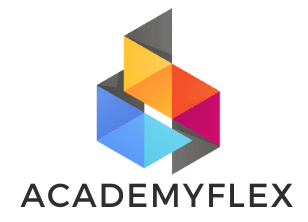Budgeting for educational institutions
Budgeting for schools is not just about counting money. It’s about making dreams come true. Every choice, from paying teachers to buying tech, affects how well schools meet students’ needs. Laws like Pennsylvania’s annual budget rules and limited funds for supplies or staff make budgeting a challenge.
This article shows how schools create budgets that support both success and financial health. It’s about turning visions into reality.
Key Takeaways
- School budgets link educational goals to financial choices like teacher pay and technology purchases.
- Legal rules, such as Pennsylvania’s annual budget laws, ensure transparency in spending.
- Effective education budget management tracks resources like textbooks, staff hours, and facility costs.
- Budgets must balance immediate needs with long-term goals like hiring teachers or updating equipment.
- Data tools help schools analyze spending to support students without overspending.
Understanding the Fundamentals of Educational Finance
Managing financial resources for schools is complex. Schools have to balance three main areas: financial resources (like salaries and grants), human resources (teachers and staff), and material resources (technology and facilities). Good school financial planning makes sure these areas work together well. It also follows the law.
Key Stakeholders in Educational Budgeting
Good budgeting needs teamwork. Here are the key players:
- Administrators: They manage the budget and make sure it follows the rules.
- Teachers: They push for the funds needed for their classrooms and programs.
- Local Governments: They give most of the money and set the rules.
- Families and Communities: They help out with donations or by speaking up for schools.
Regulatory Considerations for School Finances
There are laws that guide how money is handled. Here’s a look at federal and state rules:
| Category | Federal Mandates | State Requirements |
|---|---|---|
| Reporting | Annual Title I funding reports | State aid formula compliance |
| Equity | Ensuring Title IX spending fairness | Allocating funds to high-need districts |
Experts say schools should spend 4-6% of their country’s GDP on education. This includes paying teachers well and building schools. Schools must balance today’s needs with tomorrow’s goals to keep learning high.
Budgeting for Educational Institutions: Core Principles and Approaches
Effective budgeting for educational institutions is based on four key principles: transparency, accountability, equity, and sustainability. These principles help guide spending to meet educational goals. They also ensure resources are used where they are most needed.
Schools must balance short-term needs with long-term plans. They use academic budget analysis to make smart investment choices.
- Line-item budgeting is simple, tracking expenses by categories like salaries and supplies. It’s easy to start but might not be flexible for new goals.
- Performance-based budgeting links funding to clear goals, making sure money supports student success. But, it needs strong data systems to track results.
- Zero-based budgeting requires explaining every expense each year, cutting waste but needing lots of staff time.
- Program-based budgeting aligns budgets with specific projects, like STEM or building upgrades. But, it can be hard to coordinate between departments.
Tools like Vanco’s financial platforms make tracking and reporting easier, offering quick insights to improve spending. Schools need to pick methods that fit their unique needs and support academic budget analysis. By combining these strategies, schools can create budgets that are both fiscally responsible and academically strong.
Assessing Your Institution’s Financial Needs
Effective education budget management starts with knowing your institution’s financial needs. First, review past budgets to find where money was wasted or not used well. This helps spot patterns for better choices. Use academic budget analysis tools to compare your spending with others and find trends.
- Review historical spending to identify recurring issues
- Compare your budget to peer institutions for benchmarks
- Map expenses to institutional goals like facility upgrades or technology
This shows where your spending doesn’t match your goals.
Then, sort costs into must-haves (like staff salaries and utilities) and nice-to-haves (like new programs or events). Use charts to rank the nice-to-haves by how they help your goals. For example, new lab equipment is key for STEM, while field trips are flexible. Academic budget analysis tools make this easier.
Get department heads involved early to make sure their views shape the budget. Host workshops for them to share their needs, like new textbooks or software. Their input makes sure the budget meets real needs and stays within limits. Regular meetings keep everyone focused on the school’s goals.
Regularly reviewing these steps keeps budgets flexible. By mixing data with feedback from stakeholders, schools create budgets that meet today’s needs and tomorrow’s dreams.
Exploring Diverse Funding Sources for Schools
Getting stable funding means looking at many options. Schools can boost their budgets by getting grants, forming partnerships, and using community networks. They also need to explore federal and state resources. Here are some key ways to improve school finances.
Public Funding Mechanisms and Allocation
Public money is the main part of school budgets. Grants from the federal government, like Title I ($15 billion in 2022) and IDEA ($12.5 billion), help students who need it most. Texas schools spend 68.1% of their budget on campuses, but the way money is divided doesn’t always match how well students do.
The Academic Excellence Indicator System (AEIS) tracks this data. But studies, like those by Guthrie and Odden, show that funding doesn’t always match student success.
Grant Opportunities for Educational Programs
Grants offer flexibility for special projects. Federal block grants let schools decide how to spend money. Private foundations support things like STEM labs or teacher training. Schools need to make sure their proposals fit the grant’s needs.
Alumni Contributions and Endowments
Strong alumni networks help schools financially. Annual campaigns or endowments turn small donations into lasting funds. For example, mid-sized schools can use local events to get alumni involved, helping with facilities or scholarships.
Community Partnerships and Corporate Sponsorships
Local businesses often sponsor events or provide equipment. Companies like Apple fund tech labs, and nonprofits support mentorship programs. These partnerships help schools and communities grow closer and increase school funds.
Using all these methods helps schools get the funding they need. Regular checks on all funding sources help schools adjust to new needs without relying too much on one source.
Developing a Strategic Budget Timeline
Good school financial planning starts with a clear plan. A detailed timeline keeps every step of budget management on track. Start with a final approval date and work backward. Break the process into easy steps.
- Planning phase: Look at past budgets and get feedback from staff, parents, and community groups.
- Proposal drafting: Set deadlines for cost estimates and priority rankings from departments.
- Review and revision: Plan for feedback from leaders and the board in several rounds.
- Approval and rollout: Finish the budget and tell everyone about the changes.
The Best Practices in School Budgeting guide suggests:
- Involve finance and instructional teams to match spending with learning goals.
- Use SMARTER goals (Specific, Measurable, Achievable, Relevant, Time-bound, Engaging, Resourced).
- Save 5%–10% of total funds for unexpected costs.
The Smarter School Spending Model offers free templates for timelines. Update the calendar every quarter to reflect changes like new grants. Regular meetings help adjust plans without losing sight of long-term goals. A clear timeline makes complex tasks easier to manage.
Creating Effective Budget Allocation Frameworks
Creating a good budget allocation in education means setting spending to match goals. The Government Finance Officers Association (GFOA) suggests five steps: plan, prioritize, allocate, implement, and sustain. These steps help make sure spending meets both short-term needs and long-term plans.
Zero-Based Budgeting in Educational Settings
Zero-based budgeting means justifying every dollar. Schools start each year with a blank slate, checking if programs work before spending. For example, a district might use savings from unused buildings for teacher training.
Program-Based Budget Models
- Zero-based
- Performance-based
- Responsibility-center
- Formula-based
Program-based models link budgets to specific projects. A university might fund STEM labs and administrative offices differently. It tracks results like more students or grants.
Balancing Administrative and Instructional Funding
Staffing costs take up 70-80% of school budgets. Schools in the UK use DfE tools to compare staff levels. They might cut non-essential jobs or partner with communities to free up money for classrooms.
Good education budget management mixes new ideas with careful spending. Schools use maintenance plans or rent facilities to save money. This way, they meet both everyday needs and big goals.
Implementing School Financial Planning Software Solutions
Today, schools need tools that make budget tracking easy and follow rules well. They use advanced software to automate tasks and cut down on mistakes. Tools like Vanco and CCH Tagetik help manage money for payroll, grants, and events with up-to-date info.
Top Budget Management Tools for Educational Institutions
Vanco Financial Software and CCH Tagetik are top picks for schools. For instance, Vanco helped St. Cloud Cathedral High School raise $16,000 more each year. CCH Tagetik lets districts like Waukee Community Schools predict costs better. Here’s a look at their main features:
| Feature | Vanco Financial Software | CCH Tagetik |
|---|---|---|
| Real-Time Reporting | Yes | Yes |
| Predictive Analytics | Basic | Advanced |
| Scalability | Serves K-12 schools | Adapts to districts of all sizes |
Data Integration for Comprehensive Financial Oversight
Linking financial systems with student and HR data gets rid of data gaps. Schools using CCH Tagetik cut down on reconciliation time by over two hours a week. This ensures budgets and grant reports are accurate and meet federal rules.
Training Staff on Financial Technology Systems
Good training boosts how well staff uses software. Nicolet Union High School saw more event income after staff got better at using Vanco. Schools should hold workshops on making custom reports and keeping data safe to get the most out of these tools.
Using these tools makes finances clear and flexible. This lets schools focus on helping students while keeping finances in check.
Managing Educational Cost Control Without Compromising Quality
Effective educational cost control means balancing money with student success. Schools can cut costs without lowering quality by smart budget allocation in education. For example, regular maintenance saves money on repairs, and green upgrades cut utility bills.
- Partner with vendors offering bulk discounts for supplies and technology.
- Share facilities and staff with neighboring schools for programs like sports or arts.
- Adopt cloud-based tools like Brightly to automate expense tracking and reduce administrative waste.
Smart budget allocation in education means focusing on what really matters. Putting money into teacher training or classroom tech often leads to better results. Schools using automated systems save up to 15% on routine tasks, freeing up money for teaching materials.
Being open about cost-saving efforts builds trust. Explain how cutting paper or optimizing routes helps protect important programs. Studies show schools that involve staff in decisions see 20% more support for cost-saving efforts.
Remember, educational cost control is about smart spending, not cutting corners. By checking energy use, forming partnerships, and using data tools, schools can keep quality high while managing tight budgets.
School Budget Forecasting Techniques for Long-Term Stability
School budget forecasting is key to financial stability. It helps schools prepare for the future by looking at past trends. This way, they can face unexpected challenges head-on. Here are some effective methods for making solid multiyear plans:

Trend Analysis for Educational Expenses
Use past spending to forecast future costs. Tools like Excel or Tableau are great for this. They help you see how changes like inflation or salary hikes might affect your budget.
Start with three budget scenarios: the best-case, the most likely, and the worst-case. This method shows you both the risks and the chances for growth without needing complex math.
Enrollment Projections and Financial Planning
Enrollment trends are crucial for budgeting. Look at local housing, school boundaries, and competition. Working with local planners can help align your forecasts with new housing developments.
For example, if a district expects new housing, it might plan for more classrooms or staff. This way, it can meet the growing needs of students.
Building Contingency Funds
Save 5-10% of your budget for emergencies. Emergencies can include sudden funding cuts or unexpected repairs. Testing scenarios like policy changes or drops in enrollment helps refine your emergency funds.
A 2023 study found that schools using this approach cut budget shortfalls by up to 40%.
Monitoring and Adjusting Budgets Throughout the Academic Year
Effective education budget management needs constant focus. Schools must watch spending every month to find trends. This could be overspending on supplies or unexpected staff shortages.
Tools like ERP systems send alerts for any cost differences. For example, Jefferson County Public Schools uses a cycle-based budgeting system. It links spending to program outcomes, tracked in real time.
- Monthly reviews comparing budgets to actuals
- Quarterly root-cause analysis for variances
- Year-end adjustments using data from academic budget analysis reports
| Strategy | Jefferson County | Cleveland |
|---|---|---|
| Monitoring Tools | Cycle-based ERP integration | Propensity Score Matching software |
| Adjustment Processes | Program evaluations every 90 days | Principal-led report cards with performance grades |
| Communication | Quarterly board updates | Publicly shared progress dashboards |
Having 3-5% in reserves helps with emergencies. Schools like Cleveland also renegotiate contracts with vendors every year to save money. It’s important to have clear roles: finance teams track data, and department heads suggest changes.
Being open about budget updates builds trust. Sharing news through portals or town halls keeps everyone informed. Making small changes now can lead to stronger budgets later.
Building Financial Transparency and Accountability Systems
Transparent financial practices are key to keeping trust in school finances. Schools need to manage their budgets well. They also must show how money is spent clearly. This builds support from the community and supports school financial sustainability.
- Adopt standardized financial reports showing per-student spending and program allocations.
- Publish annual reports online, including data from the $367.1 billion state funding and federal allocations.
- Highlight how local property taxes and grants support STEM programs and facility upgrades.
Getting families and the community involved is important. Districts can hold town halls to explain budget choices. They can also use digital platforms for updates. In Michigan, where funding dropped 30% since 2002, clear budget reviews found ways to save money.
- Train staff on ethics policies to avoid conflicts of interest when allocating resources.
- Track spending on special education and bilingual programs to meet federal compliance standards.
- Publish vendor contracts and bidding processes for substitute staffing services to ensure fair practices.
Using student-centered funding models helps ensure resources go to those who need them most. By being open, schools make budgets work for fair education. This protects both finances and public trust.
Overcoming Common Budgeting Challenges in Educational Settings
Many schools face tight budgets, but smart strategies can turn challenges into opportunities. Budgeting for educational institutions requires balancing priorities while maintaining quality. Let’s explore solutions to common hurdles.
Staff costs often take 70% of school budgets. When Howard County Public Schools faced a $103M shortfall, they cut 348 positions and used reserves. This shows the need for educational cost control through strategic cuts and reserves. Here’s how schools can act:
- Track expenses: Use software like QuickBooks to spot savings in recurring costs.
- Automate payments: Florida schools saved $750k annually by switching to virtual payment systems like REPAY, reducing 8,000 paper checks.
- Engage stakeholders: Share budget plans with staff and parents to build support for tough decisions.
A balanced approach combines tech tools and teamwork. Schools using Prophix One’s real-time analytics cut errors and improve forecasts. Below are key challenges and fixes:
| Challenge | Solution |
|---|---|
| Rising insurance costs | Renegotiate contracts or explore bundled services |
| Unpredictable grants | Build a 5% contingency fund for unexpected gaps |
| Outdated processes | Adopt cloud-based budgeting tools for better tracking |
By focusing on educational cost control, schools can protect core programs. Prioritize essentials like teacher salaries while exploring partnerships with local businesses for grants. Proactive planning ensures budgets stay aligned with student needs, even during tough times.
Conclusion: Achieving School Financial Sustainability Through Strategic Budgeting
Strategic budgeting is more than just managing money for schools. It’s a way to build a strong future. Schools can meet student needs by focusing on clear budgets, fairness, and lasting solutions.
Understanding changes in student numbers and costs is key. Tools like Studio Enterprise’s budgeting software help find new ways to save money. By streamlining tasks like HR and IT, schools can spend more on learning.
For schools, finding the right balance between technology and cost is crucial. Cloud systems and data tools help make better choices and save money. Smart hiring and deals with vendors also stretch budgets without losing quality.
Regular checks on spending keep budgets on track. Showing how programs help students builds trust and support. This trust is vital for funding important initiatives.
In the end, good budgets mean better student outcomes. Schools need to use data, work with the community, and find solutions that grow. By doing this, they can make sure resources help students succeed now and in the future.
Source Links
- Managing School Resources: Budgeting and Planning for Education Leaders – https://www.keiseruniversity.edu/managing-school-resources-budgeting-and-planning-for-education-leaders/
- Microsoft Word – moachapter14 – budgeting process 100411 – https://www.hcsd.iu5.org/Induction/Finance/budgeting process.pdf
- Educational finance – https://onemoneyway.com/en/blog/educational-finance/
- PDF – https://capacity4dev.europa.eu/media/108568/download/8031b121-a77d-4c7e-93d4-ed7fc2d182f6_en
- Financial Accounting for Local and State School Systems: 2009 Edition – https://nces.ed.gov/pubs2009/fin_acct/chapter3_2.asp
- Chartered Accountants & Business Advisors | Wright Vigar – https://www.wrightvigar.co.uk/news/budgeting-strategies-educational-institutions
- 4 Types of School Budgets for Modern Schools | Vanco – https://www.vancopayments.com/education/blog/types-of-school-budgets
- Budgeting in Educational Institutions: How to Plan Finances Effectively • Teachers Institute – https://teachers.institute/institutional-management/budgeting-educational-institutions-plan-finances/
- Budgeting in Education: How to Make Better Decisions | Edsembli – https://edsembli.com/budgeting-in-education/
- Clark.p65 – https://nces.ed.gov/pubs98/clark.pdf
- How Is K-12 Education Funded? – https://www.pgpf.org/article/how-is-k-12-education-funded/
- Strategic Budgeting: What Is It, Process, and Best Practices | PLANERGY Software – https://planergy.com/blog/strategic-budgeting/
- 12 Step Checklist For Creating A School Budget | Martus Blog – https://www.martussolutions.com/blog/12-step-checklist-for-creating-a-school-budget
- Rethinking School Budgets Aligning your Budget to the Strategic Plan – https://wasbo.com/images/wasbo/documents/6/SC2023/SC2023_BudgetingBestPractices.pdf
- Understanding RCM Budgeting in Higher Education – https://moderncampus.com/blog/rcm-budgeting-in-higher-education.html
- A Guide for Optimizing Resource Allocation – https://www.scup.org/resource/a-guide-for-optimizing-resource-allocation/
- 10 top tips for maximising your school budget | Juniper Education – https://junipereducation.org/blog/10-top-tips-for-maximising-your-school-budget
- Smart Technology Planning & Budgeting For Schools – https://inspiroz.com/smart-technology-planning-budgeting-for-schools/
- How Financial Software for Schools Simplifies Budgeting and Accounting – https://www.vancopayments.com/education/blog/financial-software-for-schools
- Beyond the Spreadsheet: Financial Management Software Solutions for International Schools – https://canadaglobalacademy.com/beyond-the-spreadsheet-financial-management-software-solutions-for-international-schools/
- Boost School Operations and Save Money: 10 Strategies – https://www.brightlysoftware.com/blog/school-operations-cost-cutting-strategies
- Streamlining Expense Management in Educational Institutions – https://www.itilite.com/blog/expense-management-for-education/
- Forecasting and Budgeting Techniques – https://onlinedegrees.scu.edu/media/blog/forecasting-and-budgeting-techniques
- Budgeting in Education | Free Comprehensive Guide – https://www.vancopayments.com/education/blog/school-budget-planning-process
- Data-Driven Decision Making in School Budget Meetings | adam.ai – https://adam.ai/blog/school-budget-meetings
- Effective Budgeting Techniques for Schools – Lighthouse Academies – https://www.lha.net/2024/03/28/effective-budgeting-techniques-for-schools/
- Budget Monitoring – https://www.gfoa.org/materials/budget-monitoring
- PDF – https://sdp.cepr.harvard.edu/files/cepr-sdp/files/sdp-fellowship-capstone-efficiency-budgeting-spending.pdf
- How Are School Budgets Determined? An In-Depth Look | Vanco – https://www.vancopayments.com/education/blog/how-are-school-budgets-determined
- Education Funding – https://excelined.org/policy-playbook/education-funding/
- 6 Strategies for Effective Financial Management in K-12 Schools – https://ess.com/blog/articles-effective-financial-management-in-k-12-schools/
- Strategies for Managing School Budget Challenges – https://blog.repay.com/strategies-for-managing-school-budget-challenges
- Common Challenges in Financial Accounting for Schools and How to Overcome Them – https://www.vancopayments.com/education/blog/challenges-in-financial-accounting-for-schools
- Top 5 Budgeting Problems and Solutions | Prophix – https://www.prophix.com/blog/top-problems-budgeting-and-solutions/
- Cost Management in Education: How Studio Enterprise Helps Schools Optimize Budgets – Studio Enterprise – https://studioenterprise.com/cost-management-in-education-how-studio-enterprise-helps-schools-optimize-budgets/
- Making the Case: A Strategic Budgeting Process – https://www.terradotta.com/making-the-case-a-strategic-budgeting-process
- Budgeting and Financial Planning for Special Education Schools Strategies for Long-Term Sustainability – Cerini & Associates, LLP – https://ceriniandassociates.com/budgeting-special-education/








